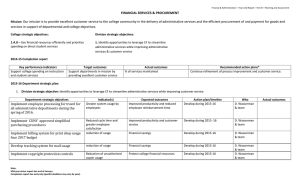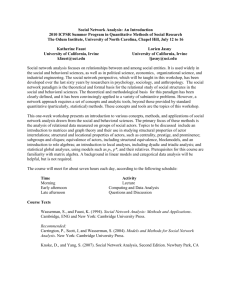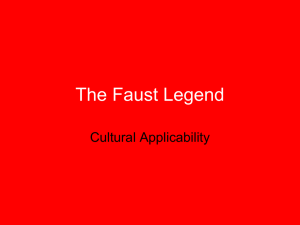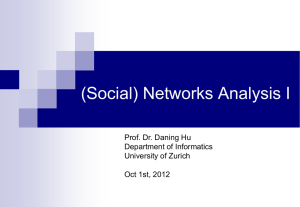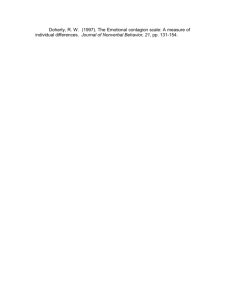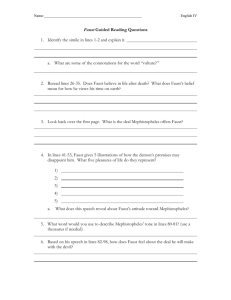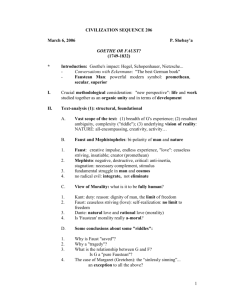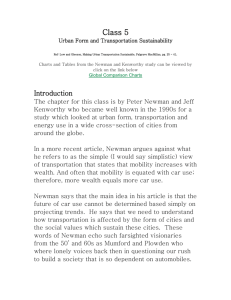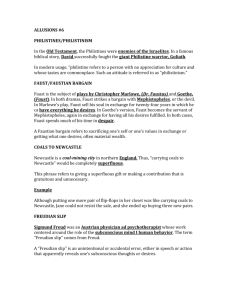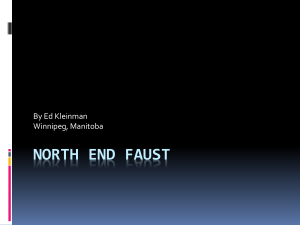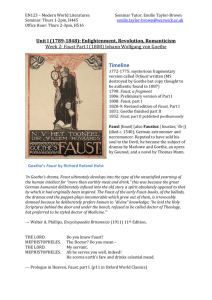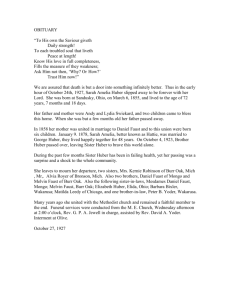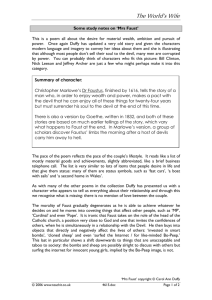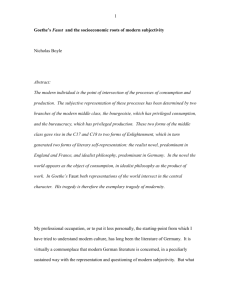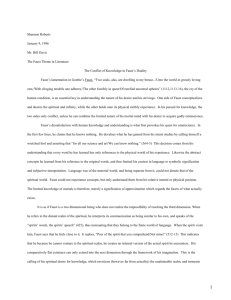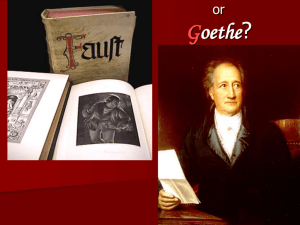Template for Proposed New Course(s)
advertisement
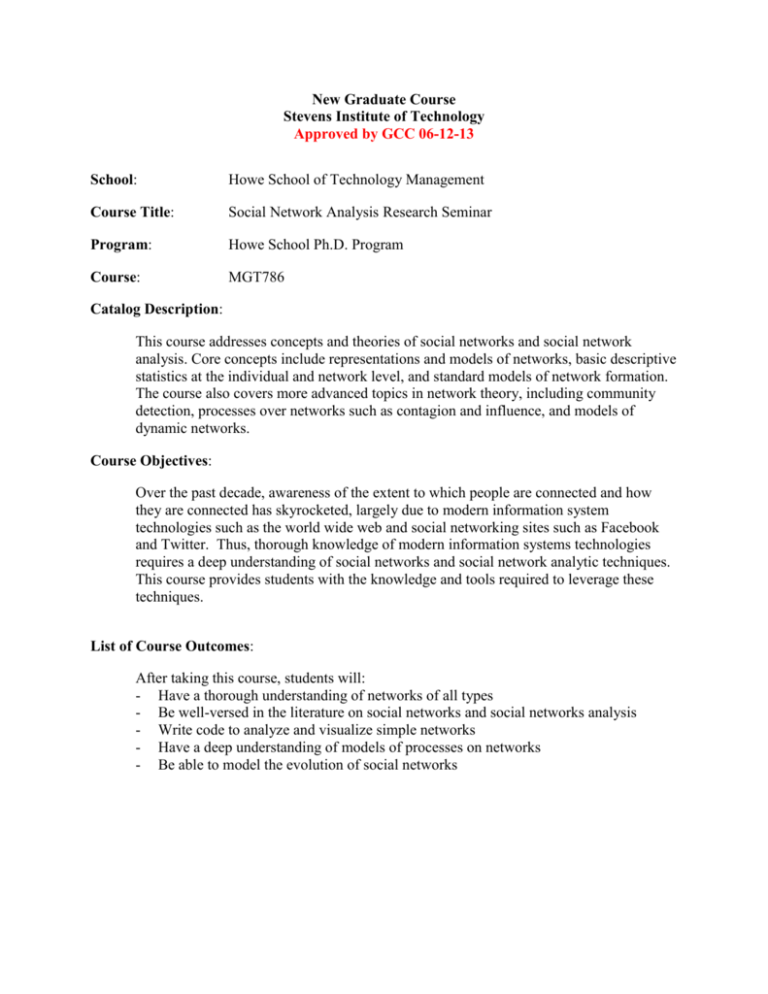
New Graduate Course Stevens Institute of Technology Approved by GCC 06-12-13 School: Howe School of Technology Management Course Title: Social Network Analysis Research Seminar Program: Howe School Ph.D. Program Course: MGT786 Catalog Description: This course addresses concepts and theories of social networks and social network analysis. Core concepts include representations and models of networks, basic descriptive statistics at the individual and network level, and standard models of network formation. The course also covers more advanced topics in network theory, including community detection, processes over networks such as contagion and influence, and models of dynamic networks. Course Objectives: Over the past decade, awareness of the extent to which people are connected and how they are connected has skyrocketed, largely due to modern information system technologies such as the world wide web and social networking sites such as Facebook and Twitter. Thus, thorough knowledge of modern information systems technologies requires a deep understanding of social networks and social network analytic techniques. This course provides students with the knowledge and tools required to leverage these techniques. List of Course Outcomes: After taking this course, students will: - Have a thorough understanding of networks of all types - Be well-versed in the literature on social networks and social networks analysis - Write code to analyze and visualize simple networks - Have a deep understanding of models of processes on networks - Be able to model the evolution of social networks Prerequisites: Only for accepted Ph.D. students Cross-listing: None Grading Percentages: HW Class work Mid-term Final Projects Other Class work (20%): Participation HW (40%): 12 summary reports addressing key concepts from class Final paper (40%): A research proposal including literature review and preliminary analyses Credits: 3 credits Other For Graduate Credit toward Degree or Certificate: Yes No Not for Dept. Majors Other Textbook(s) or References: (List required and recommended texts including publisher and year in a recognized format such as APA, AIP, Chicago or MLA): See Readings in the sample syllabus. Mode of Delivery: Class Online Modules Other Program/Department Ownership: Information Systems When first offered: Fall 2014 Department Point of Contact and Title: Winter Mason, Assistant Professor Date approved by individual school and/or department curriculum committee: 05-06-13 Sample Syllabus: Topic(s) Reading(s) Week 1 Introduction to course Basic Network Concepts Wasserman, S., & Faust, K. (1994). Social network analysis: Methods and applications. Week 2 Types of networks Tools for visualization Wasserman, S., & Faust, K. (1994). Social network analysis: Methods and applications. Week 3 Descriptive metrics of ego networks Wasserman, S., & Faust, K. (1994). Social network analysis: Methods and applications. Week 4 Descriptive metrics of entire networks Borgatti, S. P. (2005). Centrality and network flow, Social Networks, 27, 55-71. Albert, R., Jeong, H., and Barabási, A.-L. (1999). Diameter of the WORLD-Wide Web, Nature, 401, 130-131. HW Burt, R. S. (1992). Structural holes: the social structure of competition. Week 5 Basic network models Week 6 Graph algorithms Week 7 Community detection Week 8 Processes over networks Mark Granovetter (1983). The strength of weak ties, a network theory revisited. Sociological Theory, 1, 201-233. Barabási, A.-L., & Albert, R. (1999). Emergence of scaling in random networks. Science, 286, 509-512. Newman, M. E. J., Watts, D. J., & Strogatz, S. H., (2002). Random graph models of social networks. Proceedings of the National Academy of Sciences, 99, 2566-2572. Wasserman, S., & Faust, K. (1994). Social network analysis: Methods and applications. Newman, M. E. J. (2004). Fast algorithm for detecting community structure in networks, M. E. J. Newman, Phys. Rev. E 69, 066133. Fortunato, S. (2010). Community detection in graphs. Physics Reports, 486(3-5), 75–174. doi:10.1016/j.physrep.2009.11.002 Watts, D. J., & Dodds, P. S. (2007). Influentials, networks, and public opinion formation. Journal of Consumer Research, 34, 441-458. Aral, S., Muchnik, L., & Sundararajan, A. (2009). Distinguishing influence-based contagion from homophily-driven diffusion in dynamic networks (Vol. 106, pp. 21544–21549). Proceedings of the National Academy of Sciences. Week 9 Prediction on networks Week 10 Hard problems in Social Network Analysis Shalizi, C. R., & Thomas, A. C. (n.d.). Homophily and Contagion are generically confounded in observational social network studies. Sociological Methods & Research, 40(2), 211–239. Liben-Nowell, D. and Kleinberg, J. (2007), The link-prediction problem for social networks. Journal of the American Society for Information Science and Technology, 58: 1019–1031. Hill, S., Provost, F., & Volinsky, C. (2006). Network-Based Marketing: Identifying Likely Adopters via Consumer Networks. Statistical Science, 21, 256-276. Borgatti, S. P. (2006). Identifying sets of key players in a network. Computational, Mathematical and Organizational Theory, 12, 2134. Robins, G., Pattison, P., & Wang, P. (2006). Closure, connectivity and degrees: New Week 11 Dynamic Networks specifications for exponential random graph (p*) models for directed social networks Leskovec, J., Backstrom, L., & Kumar, R. (2008). Microscopic evolution of social networks. Proceeding of the 14th Week 12 Large-scale graph Song, X., Lin, C., Tseng, B., & Sun, M. (2006). Modeling Evolutionary Behaviors for Community-based Dynamic Recommendation. Proc. SIAM Intl. Conf. Data Mining. Bekkerman, Ron, Mikhail Bilenko, and John Langford. "Scaling up machine learning: parallel and distributed approaches." Proceedings of the 17th ACM SIGKDD International Conference Tutorials. ACM, 2011. algorithms Week 13 Defining the boundaries of the network model Week 14 Final paper presentations Clauset, A., Newman, M., & Moore, C. (2004). Finding community structure in very large networks. Physical Review E, 70(6), 66111. Tout, K., Evans, D. J. and Yakan, A. (2005). Collaborative filtering: Special case in predictive analysis. International Journal of Computer Mathematics, 82, 1-11.
